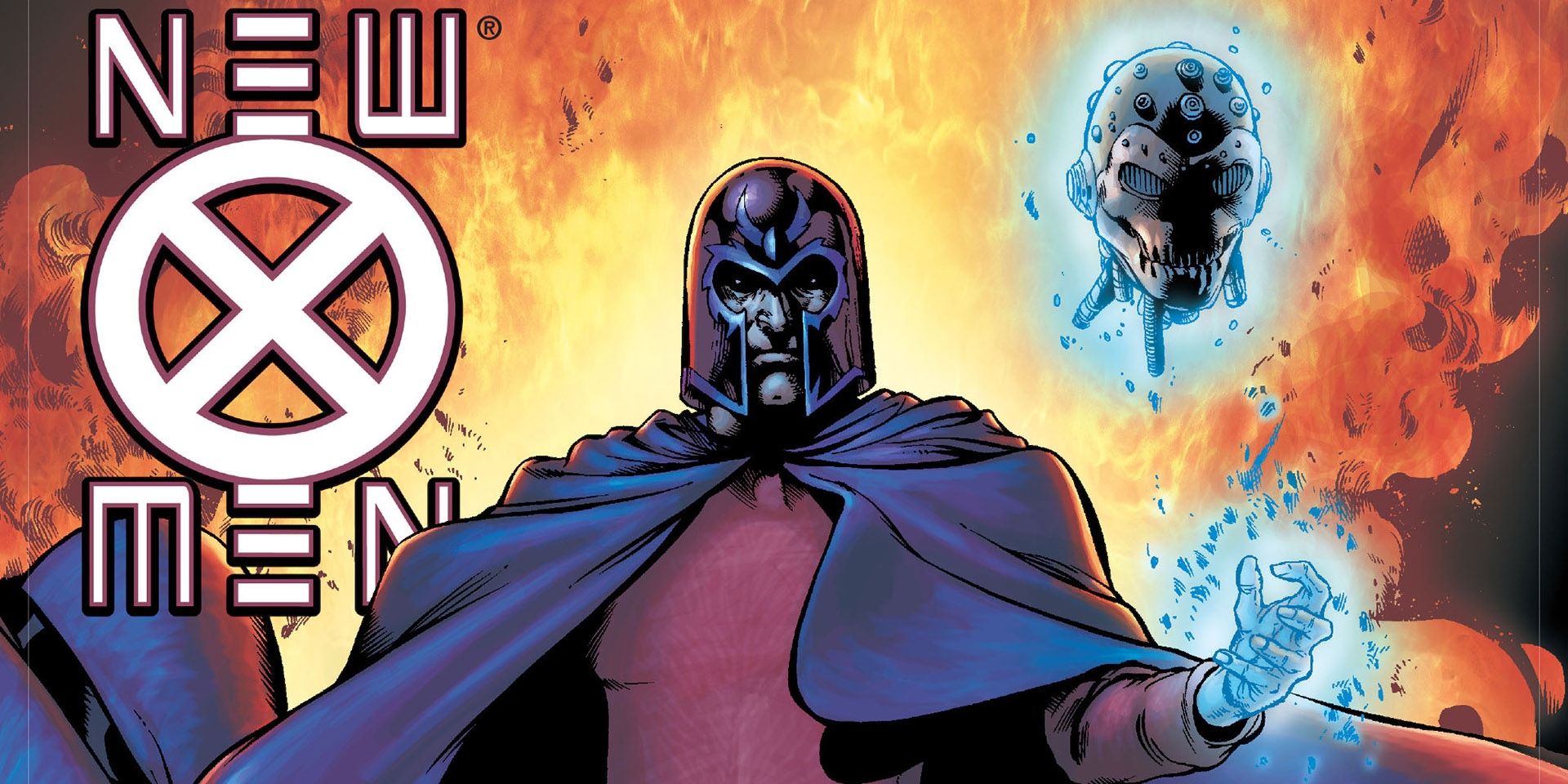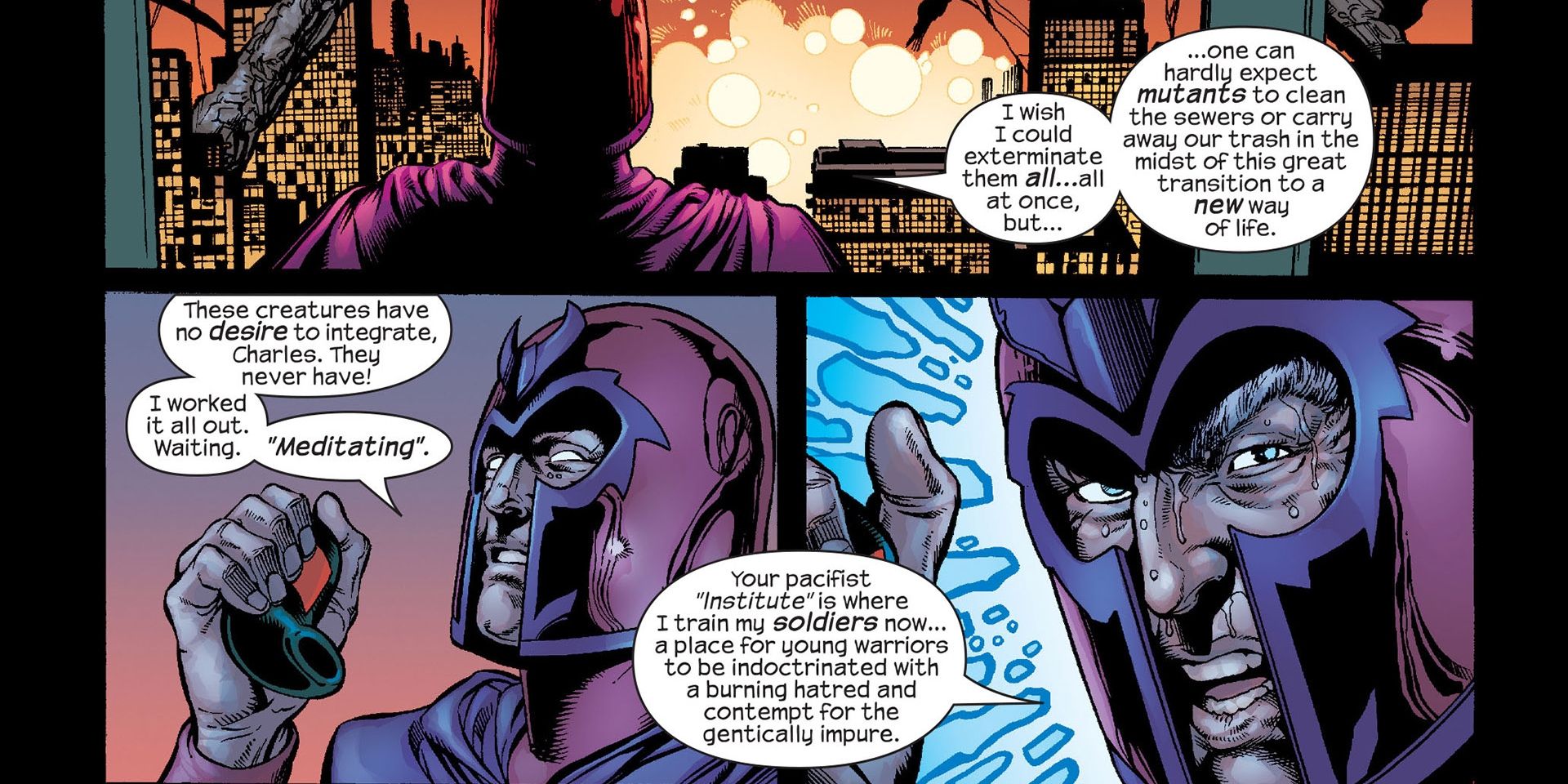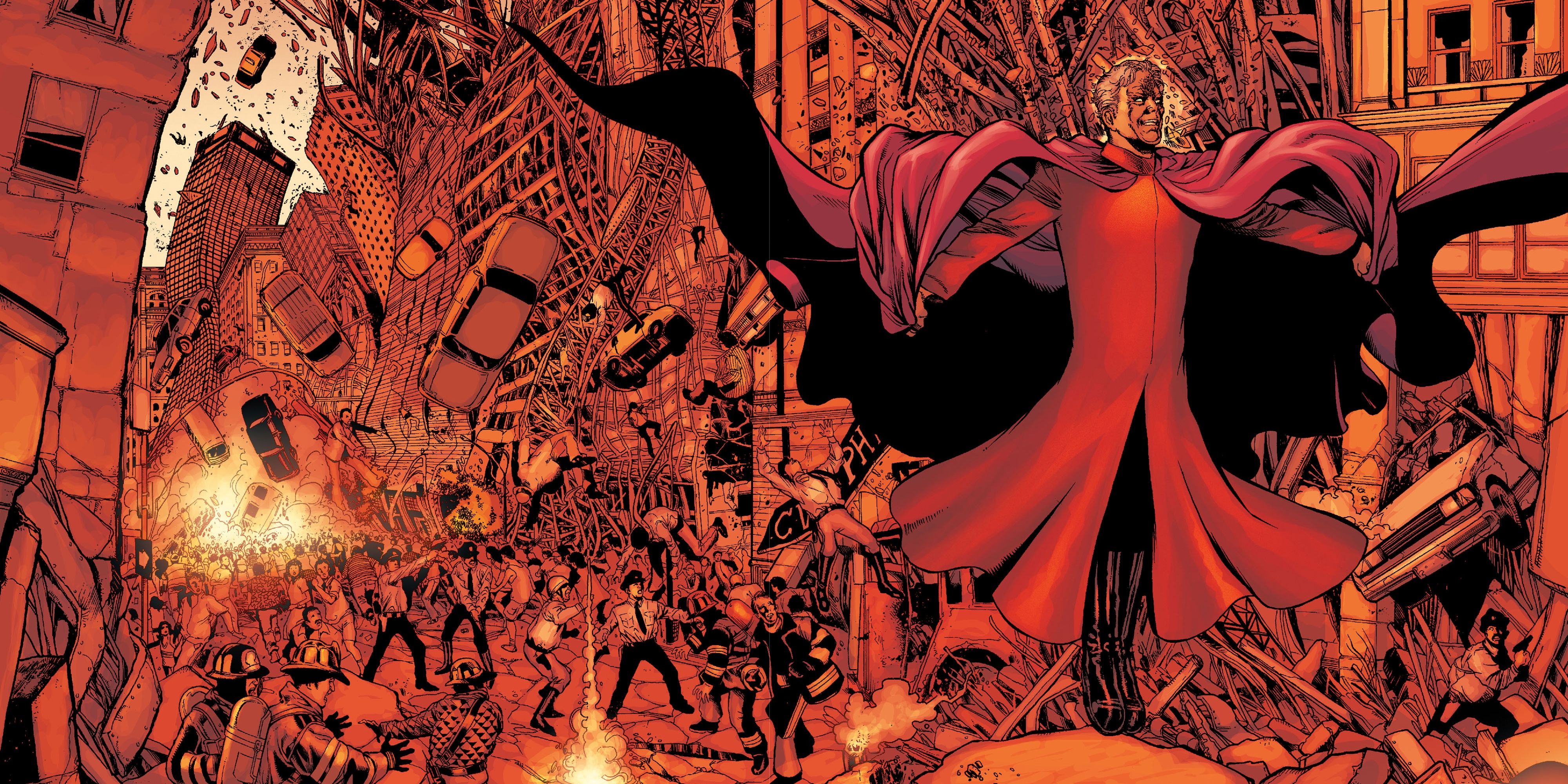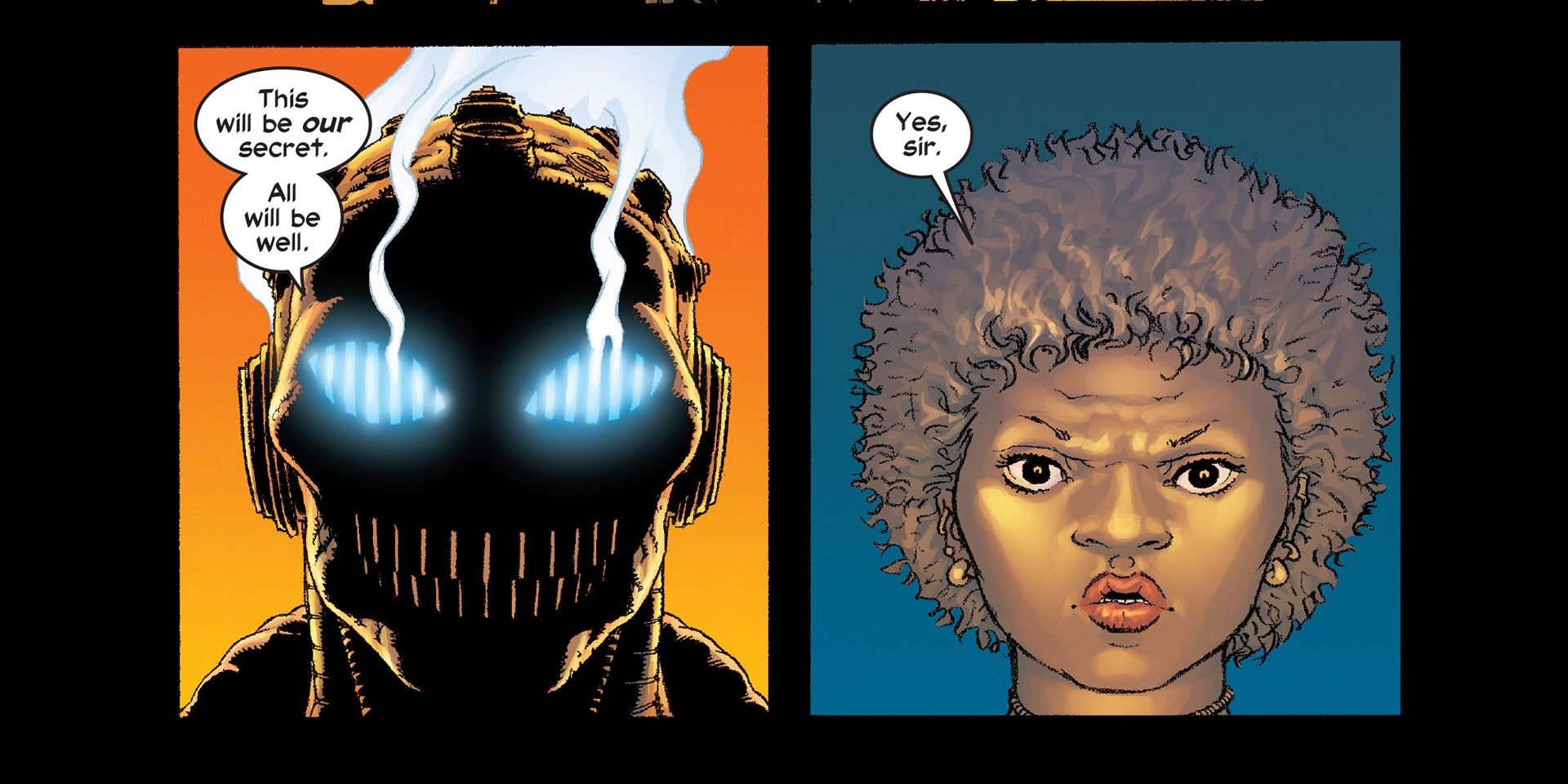Truly good storytelling can be a hard commodity to come by in the pages of your favorite comic. The characters, the dialogue, the action-sequencing and the overall emotional catharsis of the story all play a part in the creation of a good comic title. When Grant Morrison took the reins of X-Men in 2001, changing the title to New X-Men and beginning a revolutionary 40-issue run which saw the mainstream comic incorporate aspects of the then-new cinematic versions, he ended up changing the way X-Men looked and felt from a fundamental level. And then his greatest feats were undone with senseless retconning.
In the pages of New X-Men, Morrison made changes that affected every aspect of the storied band of mutant heroes. The Xavier Institute was revealed as a mutant haven to the public and re-opened as a school with Xavier and then Jean Grey as Headmaster. Cyclops began a psychic affair with the newly-joined Emma Frost, creating a divide of mistrust with his wife Jean. And finally, Magneto was revealed to have been masquerading as a newly-rescued mutant teacher named Xorn, and, with his class of misfit students as his new Brotherhood, decimated New York City, killed countless people in the midst of a drug-crazed power-trip, and finally murdered Jean at the end.
What Morrison set out to do was redefine the way people thought about the often schizophrenic X-franchise, rife with jungle and space adventures amidst high-school teenage romance drama and race relation analogies, by focusing on Xavier’s mission to help young mutants along with a core cast of heroes beleaguered with their own emotional hang-ups. As a writer, Morrison would best be described as a world-builder, and the vision he had for the X-Universe was one built on cinematic slickness, psychedelic transpositions, and devastating pay-off. And in the end, Marvel took his legacy away by retconning his greatest story contribution, the death of Magneto, out of existence.
The point of contention seemed to revolve around X-Men archenemy and current mainstay Magneto, perhaps one of the most beloved villains in all of Marvel. While clearly conceived as your classic fascist dictator, the 1980s had seen many attempts to restore the villain’s image, sometimes pointing towards his past as a Jewish Holocaust survivor as the traumatic base of his evil. Morrison did away with this, reasoning that Magneto “is a mad old terrorist twat,” in an interview with PopImage.com.
“No matter how he justifies his stupid, brutal behavior, or how anyone else tries to justify it, in the end he's just an old bastard with daft, old ideas based on violence and coercion,” Morrison said. “I really wanted to make that clear at this time.”
In the penultimate story-arc “Planet X” Morrison returns Magneto to his villainous roots and portrays him as a symbol of everything wrong with super-powered strongmen. Addicted to the mutant-power enhancing drug “Kick,” Magneto is a power-mad despot relying on children whom he has manipulated into serving him and his own acts of destruction and violence to force the people of New York to submit. Eventually, he is confronted and taken down by the X-Men (despite meticulously engineering their demises individually) and murders Jean in a fit of rage upon seeing all is lost.
Though his greatest plot twist of the run was likely featured in his final story, the alternate apocalyptic future arc “Here Comes Tomorrow” (in which “Kick” is revealed to be the vehicle by which the real big-bad, the hyper-intelligent bacteria “Sublime”, manages to possess its hosts), “Planet X” was critically acclaimed at the time for its shocking yet well-executed pay-off. Hard though it may have been to accept, Magneto was a villain who killed human beings indiscriminately based on essentially racial grounds in his heyday, and, reformed or not, this was always part of his character. Leaving X-Men with this message, while also taking away his most compellingly written character Jean Grey, was a bold yet brilliant choice from a story-telling perspective: it brought into clear and distilled focus the struggle at the core of the mythos in their most stark terms.
So it was disappointing when a slipshod retcon was assembled before Morrison was hardly out the door, undoing all of his innovative world-building. A “new” Xorn was introduced into the pages of Uncanny X-Men by Chuck Austen and the “Xorn” whom Morrison repeatedly said was intended to be the actual Magneto was revealed to be his twin brother. Magneto was reintroduced in the pages of Excalibur #1, which followed Professor X and him on a mission to found a new Genosha, and soon, with the House of M crossover, the whole situation was explained away as a manipulation by Magneto’s daughter the Scarlet Witch by writer Brian Michael Bendis.
Tom Brevoort, then Executive Editor of Marvel, would eventually say that this retcon did not make sense, a stunning admission from a major comics executive. The fact of the matter is that it doesn’t make sense because it was a bad idea. Morrison was trying to write a story in which a diabolical madman under the influence of a parasitic drug pretends to be a good person only to wind up making the heroes regret their trust in him, and the audience for liking a character clearly written to be a monster. This is a very strong way to add something new to a long-running series like X-Men: making it resonant and meaningful in a way that makes sense. The reader doesn’t need to feel sympathy for a terrorist, no matter what reasons he has or how cool his costume looks.
Making Magneto an irredeemable villain may have been a step too far in the eyes of Marvel’s Editorial Board, but it was a necessary sacrifice in the name of keeping the series artistically viable. While Morrison’s influence has undoubtedly continued in the pages of the X-Books since his departure, his true lasting legacy was no doubt taken from him in the name of a senseless retcon in order to keep an outdated character relevant.
Source: PopImage.com




